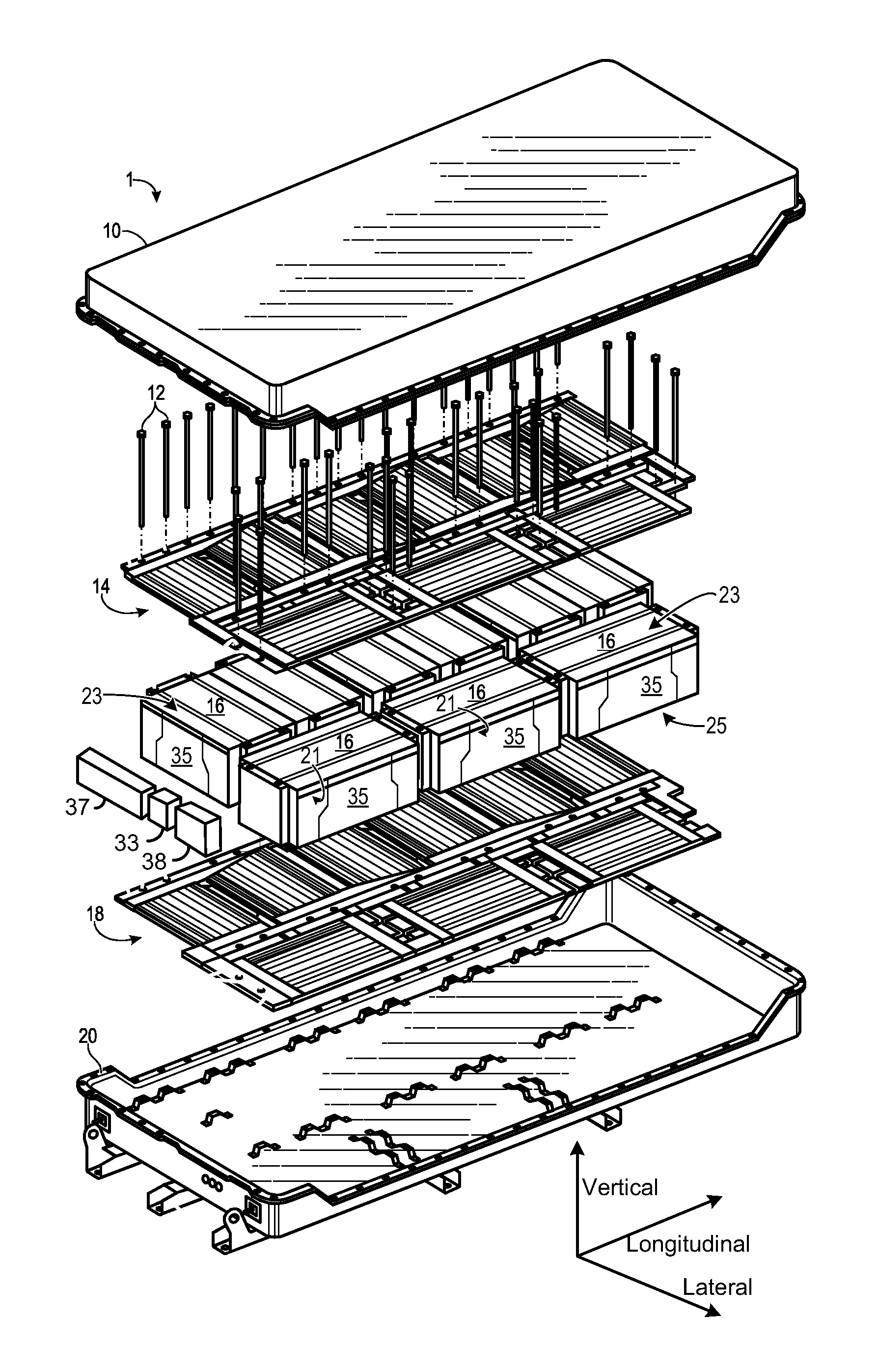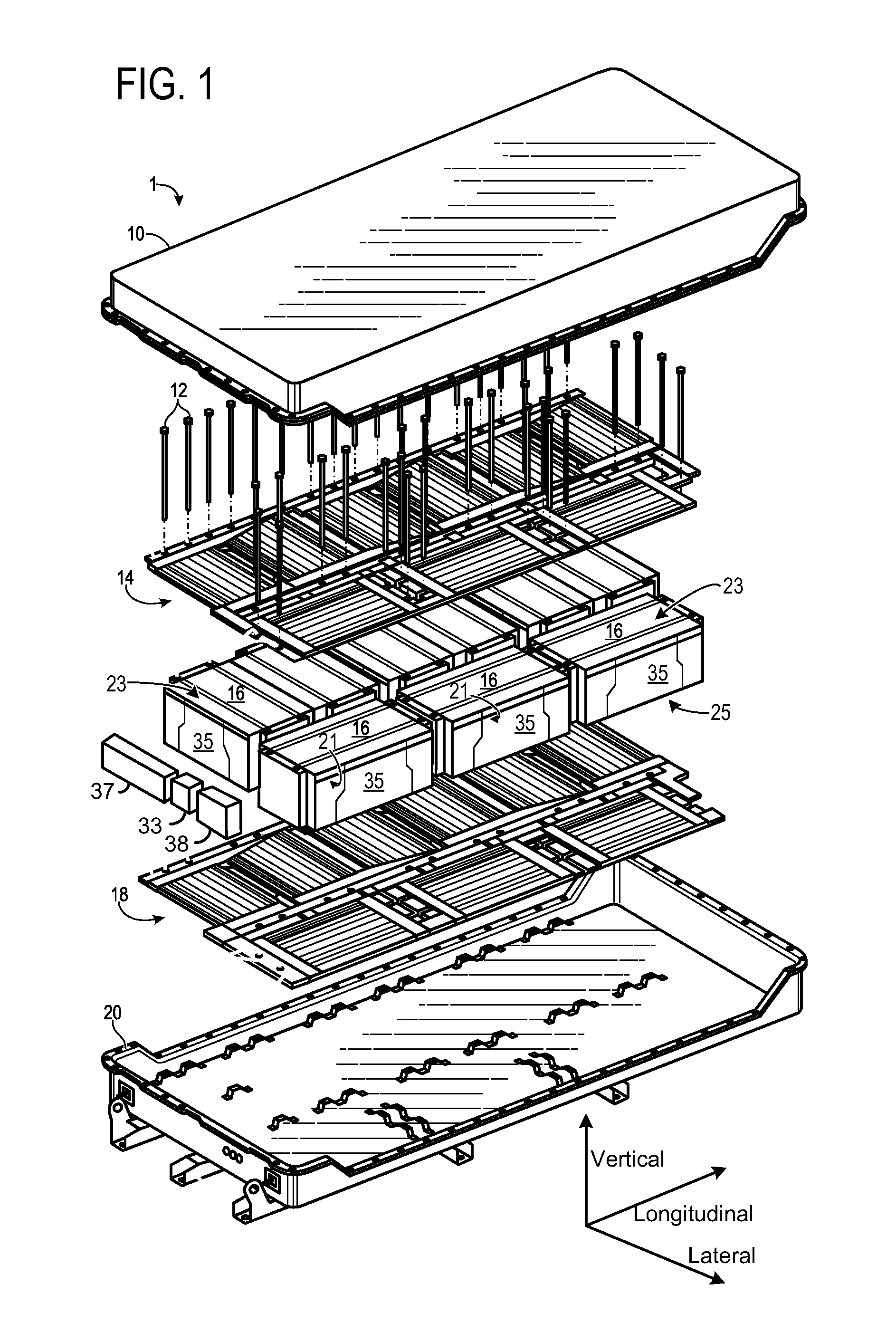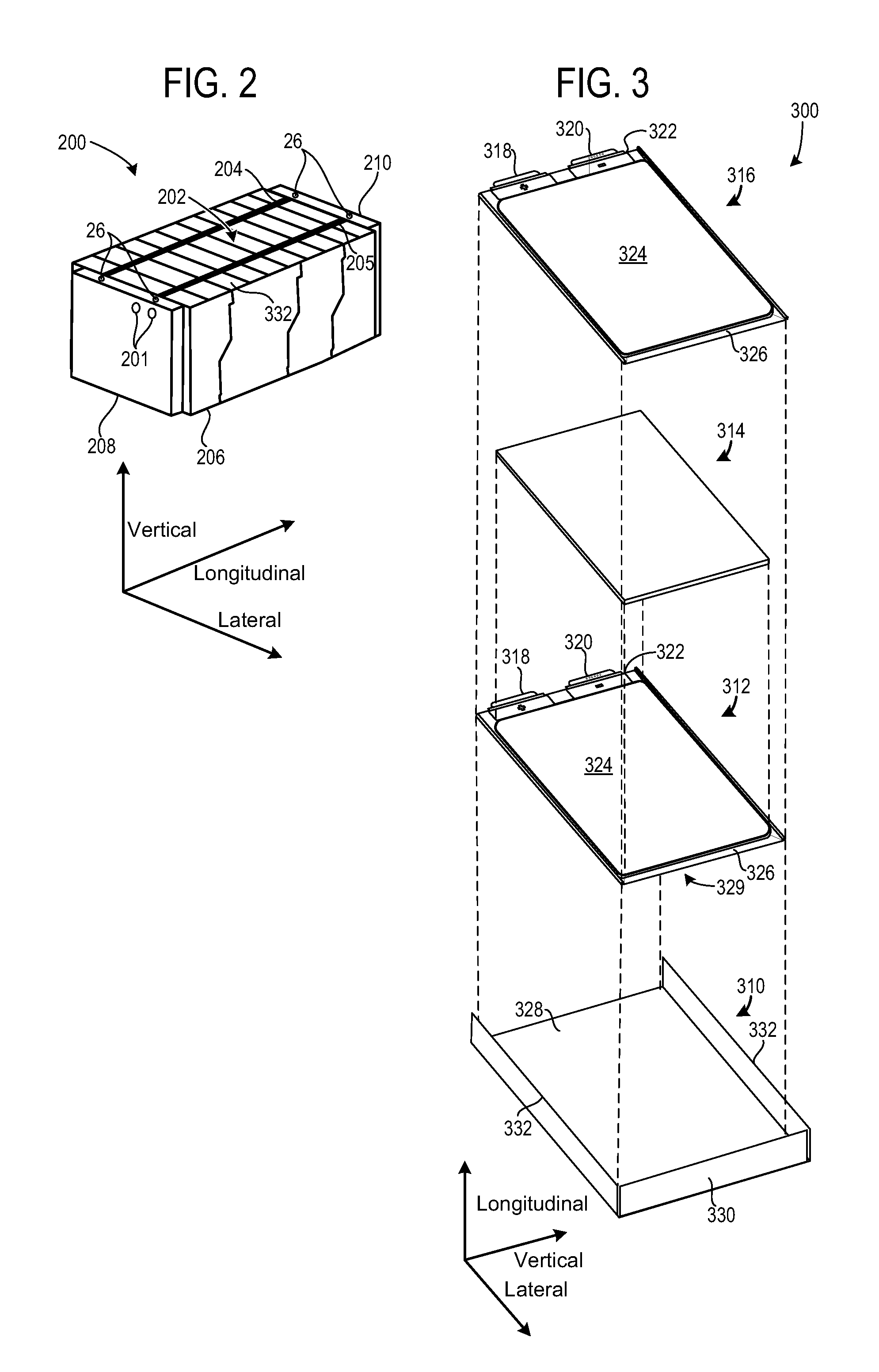System and Method for Extending the Usable Capacity of a Battery Pack
- Summary
- Abstract
- Description
- Claims
- Application Information
AI Technical Summary
Benefits of technology
Problems solved by technology
Method used
Image
Examples
Embodiment Construction
[0024]The present description is related to extending the usable capacity of a battery pack. In one embodiment, battery cells such as those illustrated in FIG. 2 may be combined in a battery pack as illustrated in FIG. 1. The power from the battery cells may be selectively delivered to a load external to the battery pack. Within a battery pack, charge may be shuffled between battery cells by circuitry described in FIGS. 5 and 12. Charge can be shuffled between battery cells according to the methods of FIGS. 6-7 and 13-14 to extend battery discharge cycle duration. Further, charge may be moved within a battery pack according to the methods of FIGS. 8 and 15 to reduce current and electrical noise within a battery pack.
[0025]FIG. 1 shows an exploded view of a battery assembly 1. The battery assembly may include a cover 10, coupling devices 12, a first cooling subsystem 14 (e.g., cold plate), a plurality of battery modules 16, a second cooling subsystem 18 (e.g., cold plate), and a tray...
PUM
 Login to View More
Login to View More Abstract
Description
Claims
Application Information
 Login to View More
Login to View More - R&D
- Intellectual Property
- Life Sciences
- Materials
- Tech Scout
- Unparalleled Data Quality
- Higher Quality Content
- 60% Fewer Hallucinations
Browse by: Latest US Patents, China's latest patents, Technical Efficacy Thesaurus, Application Domain, Technology Topic, Popular Technical Reports.
© 2025 PatSnap. All rights reserved.Legal|Privacy policy|Modern Slavery Act Transparency Statement|Sitemap|About US| Contact US: help@patsnap.com



